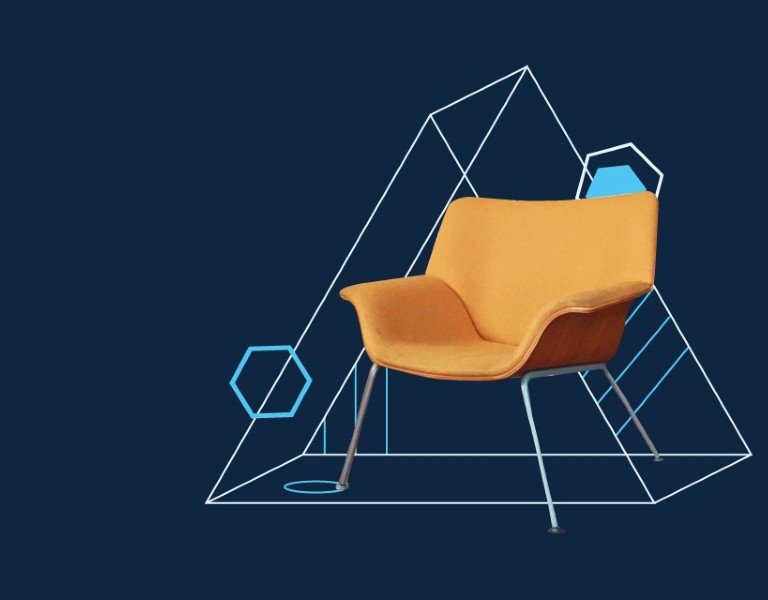A catalyst for (digital) change
Prior to embarking on their digital transformation journey, this leading furniture retailer was wrangling over 20 systems which were not properly integrated. Ten of these systems were outdated and their ERP heavily underutilized. The company also had to manage more than 160 complex integrations, and a disconnected data strategy that governed two data lakes.
The existing infrastructure was hosted on-premises, which meant resource-intensive manual tasks were required when the environment needed refreshing. There were also several data inconsistencies streaming from multiple enterprise applications. Security vulnerabilities, lack of streamlined processes, poor support, and limited scalability were also key challenges they had to overcome as the company’s integration infrastructure was built on a monolithic system. The company’s disaster recovery and continuity mechanisms were not established, nor were they tested. The furniture retailer also lacked information governance and compliance frameworks.
The need for better operational efficiency, coupled with the company’s vision to remain competitive amidst a rapidly evolving digital landscape, were also contributing factors. Issues such as resource-intensive manual tasks, outdated technology, and the risks associated with nearing end-of-life applications became significant catalysts for the need to change.
So how did this leading company take its first step towards digital transformation?
Gearing for growth
The first step in the digital transformation journey was assessing their as-is state with Fortude’s digital maturity pulse assessment. The findings of this assessment formed the foundation for providing strategic recommendations and a transformation roadmap.
What did this assessment address? A high-level overview highlighted the company’s overall digital maturity, with a 30,000 feet view of its digital landscape. The assessment offered a holistic view, targeting areas essential for transformational readiness. Subsequently, the focus areas were identified and prioritized based on the business criticality. This included an integrations strategy, a customer strategy, a data strategy, ERP optimization, and a plan for migration to the multi-tenant cloud edition.
What did the solutioning stage cover? In line with the critical areas identified in the Pulse assessment, Fortude initiated a comprehensive ‘Enterprise Integrations and Future Readiness Assessment’. This delved deep into the organization’s business model, infrastructure, integrations and data management, identifying both functional and technical gaps. As a result of this review, high level solutions were provided, segmented into rationalized and prioritized work packages. This systematic approach set the stage for rolling out comprehensive solutions in upcoming project phases.
The objective? To evaluate and optimize the company’s enterprise systems by providing a high-level solution in preparation for a more detailed solutioning and rollout. Key issues were identified, and recommendations were made, focusing on making the most of the new functionalities of their existing ERP system, streamlining processes, reducing costs, and enhancing integrations. Today, we at Fortude play a key supporting role in governing the integration roadmap. Our expertise in enterprise systems have helped prioritize the utilization of advanced system functionalities within their current ERP. Through this, the company will not only streamline its processes but enhance integrations by migrating to a standardized modern integration platform and replace redundant systems with far more robust alternatives. Moving to the cloud is also a key priority that has been initiated in parallel.
Another pressing area for the business is a data analytics strategy and that’s covered as part of our tailored work packages.
Making every (digital) win count
The result of our engagement with leading furniture retailer is multi-faceted.
- We’ve set the groundwork for significant cost savings by eliminating the duplication of data and proposing the retirement of outdated systems.
- Our strategic roadmaps are designed to offer clear business value, such as predictable releases, workload-relevant performance management, and application of industry best practices that will lead to improved operational processes and support.
- We have also enabled enhanced support and improved scalability for near-real-time reporting. These achievements will collectively contribute to an agile and efficient organization.
If you’re a CIO reading this, another by-product of our engagement is that we can help you secure board support – just like we did with this leading company. By aligning our strategic initiatives with the company’s overarching vision, communicating anticipated wins, assessing the value from retiring unnecessary integrations and streamlining work processes – we were able to help leadership foster a culture that supports the company’s ongoing transformation efforts.
Digital transformation: A journey, not a destination
Fortude will support the enterprise as they migrate their essential functionalities to the multi-tenant ERP cloud environment. This includes ensuring that the in-house applications are ready for this move to the cloud. As part of our strategic approach, system integrations will undergo a transition, initially interfacing with the existing framework before shifting focus to the newly adopted platform. While we have established the need for the organizational change management, the strategy, roll-out and adoption will be detailed in subsequent phases of the project.
Our commitment extends beyond project completion, and this is what it looks like:
- Strategic Direction: Leveraging insights from our initial assessment, our aim is to nurture a lasting relationship, guiding businesses through every stage of their digital evolution.
- Adaptive Road mapping: Our strategies are flexible and will evolve with changing business needs.
- Collaborative Approach: Our model emphasizes knowledge-sharing and collaborative problem-solving to ensure collective progress.
- Enterprise Application Modernization: We drive business outcomes and boost productivity through innovative solutions.
- Dedicated Support: A specialized team remains accessible, offering both technical and strategic direction.
With our support, businesses are primed for a successful journey towards a more integrated, efficient, and future-ready operational model. Journey with us for long-term success and let’s craft a future that’s integrated, efficient, and geared for tomorrow’s challenges.
About the customer
The customer is a leading furniture retailer in home and outdoor furniture and appliances and has an extensive presence across the country and a workforce of over 2,000 employees.
Subscribe to our blog to know all the things we do


